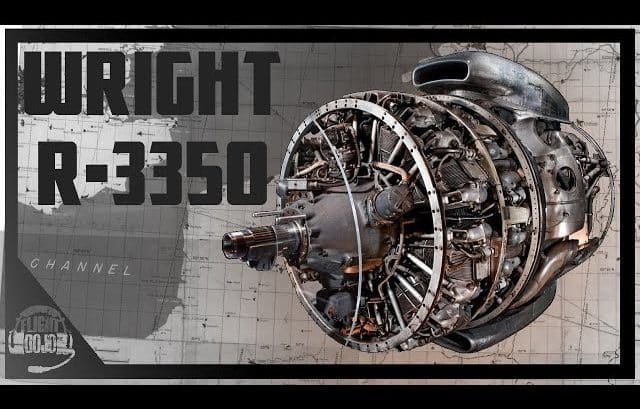During WWII, amidst the groundbreaking technological advancements shaping the face of warfare, one engineering marvel stood out leaving a significant mark in aviation history- the R-3350 Duplex Cyclone.
This seemingly unstoppable engine had a tumultuous journey all throughout, pushing the limits of what was possible, proving to us once again that innovation comes with a steep price.
The R-3350
The R-3350 shared similarities with the well-loved R-2600. However, its additional four cylinders mean a significant increase in displacement. The R-3350 became one of the first Wright aeronautical engines fitted with the Wright-designed gear-driven supercharger pushing the boundaries of technology during the time.
However, by that time, the company learned from Rolls-Royce’s mistakes. The engineers made crucial design changes that enhanced the supercharger’s efficiency by approximately 81 percent.
Challenges
Because the R-3350’s engines were so large, there was an issue of vibration. This vibration from the crankshaft transmitted forces to the propeller shaft, causing fatigue failures. Eventually, additional counterweights were incorporated, stopping the vibrations.
Since the engines were so large, they also began overheating. It turns out, the engine’s cooling surface failed to offer enough surface area to keep the engine cool under high-power, climbing conditions. Fortunately, engineers turned to sodium-cooled exhausts and unique front-facing exhaust arrangements, solving the cooling problem.
World War II
During the war, all combat-flown R-3550s were rated at 2,200 horsepower. However, in extreme cases, an emergency rating of 2500 horsepower was allowed, pushing the engines to their limits.
As the war went on the R-3350 program pushed forward, adapting to overcome its challenges to support the fight. The army’s requirements continue to change dramatically, they now require self-sealing fuel tanks, armor plating, multiple gun turrets, and more. The game is evolving. Lockheed soon dropped out because of other commitments, which leaves Boeing’s B2-9 and Consolidated’s B-32 in the running.
Despite its turbulent beginnings, the B-29 emerged as one of the most effective strategic bombers of the war with 4,221 units built by the time production ended in 1945. Later it was replaced by the B-32. In terms of performance, it matched the B-29 but these similarities wouldn’t save it from its grim fate. When WWII drew to a close, only 144 B-32s were delivered.
Overcoming Challenges
When the R-3350’s development hit rock bottom, the combat version, the Dash 23, emerged as the savior for early production B-29s. Wright engineers investigated engine failures between October and February of 1943.
Reduction gear failures stood out as the main culprit leading to the incorporation of tighter tolerances for the pinion carrier. Another issue was over speeding due to slow response times. Modifications like bigger oil galleries and scavenge pumps addressed this issue.
Conclusion
So what can be said by the R-3350 who became the biggest production radial engine manufactured by Wright Aeronautical? Well, just like any other aero engine program, the issues stemmed from the fact that there were time constraints involved.
Manufacturers were always racing against time to deliver reliable engines that could meet the increasing power demands for faster aircraft. Still, it deserves recognition for the groundbreaking engineering achievements it represents. During that time, it represented the state of the art.



